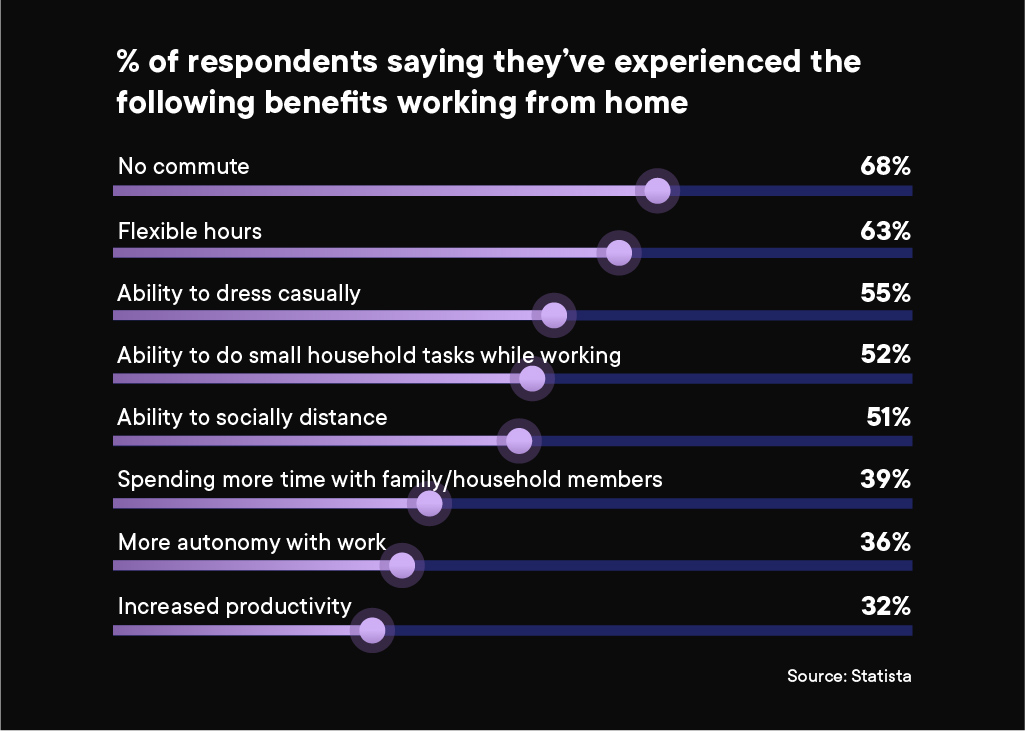Ex-Normal Vs. New Normal: Is Boundaryless Work The Future of Work Culture?

After almost two years of state-imposed lockdowns, it is nice to see children back in school again. Roads and trains are congested again. Markets and movie theatres, restaurants, and pubs report a surge in footfalls. Evenings outside the four walls of a home are back again, with masks, of course – they’re the new dress code.
So does that mean it’s only a matter of time before offices open and we go about business as usual? Not entirely, a recent survey from LiveCareer claims that 81% of employees today enjoy working remotely. While most people might think that the future of work will host hologram meetings or have robots who cook fancy office meals, the future workspace boils down to the basics – empowering employees with the freedom & flexibility to work from anywhere convenient.
Vaccines are a New Lease on Life
The global medical and health fraternity and frontline workers operated through the pandemic to fight the invisible enemy. Scientists worked round the clock to identify the deadly virus, conducted methodical clinical trials, achieved regulatory approvals from nodal bodies, and manufactured vaccines in record time.
Today, more than 11.4 billion doses have been administered in 184 countries. And this global drive has been successful in controlling the spread of the virus and the severe illness by building immunity. The positive results of the worldwide vaccine drive were visible during the Omicron surge. The vaccine with a booster dose reduced the chance of hospitalization and death by more than 90% and made the virus less fatal.
After 6,210,719 deaths, according to the WHO dashboard as of 22nd April 2022, and two challenging years later, the vaccine drive gives us hope that ‘normal’ is not lost forever. But can we say the same about our work life?
Remote work is not a new trend. What was a slow drift for p.c. users who worked off-site & after hours simply accelerated with the pandemic, forcing remote work as a large-scale trend that is here to stay. But how did the perception of workspace change over the last two years, and where is this trend going?
Benefits of Working from Home/Anywhere
There is no denying that the boundaryless work culture is gaining momentum. In contrast to spending time, money and energy being stuck in traffic with reckless drivers, the popular choice leans in the favor of serene waterfront open-rooftops or working from beach cafés that offer beautiful sunsets. Below are some other benefits that entice employees to make the most of work beyond boundaries:

Firms are replacing vertical hierarchies with horizontal networks due to rapidly changing market conditions and global competition. Thanks to connectivity, brought to you by the advancements in modern technology, more and more employees report that working from a place of their comfort has positively affected their work-life balance with a higher sense of security. In addition to acquiring new career-related skills, people now better understand expectations, inducing clarity & collaboration.
“Tier 2 & Tier 3 cities are benefitting with an increase in the talent pool and decreasing the dependency on Metro & Tier 1 cities.”
Working from offices was once the norm in the workplace. As a result, the talents of Metro and Tier 1 cities benefited more than the talents in Tier 2 and Tier 3 cities. The pandemic has resulted in a cultural shift in the workplace. Thanks to technology advancements, talent can now be identified and hired from anywhere. This is why most companies across India are now putting a greater emphasis on talent and hybrid working practices.
Work-from-home, work-from-anywhere, and remote work are widely adopted hybrid working styles that have enhanced productivity while allowing skilled employees to work effectively with a greater comfort level. Talents no longer need to be away from their families for work in Metro or Tier 1 cities. They can set up their workplace in their hometown (in tier 2 and tier 3 cities) and work from anywhere.
The Future of Work in the New Normal
The pandemic has made revolutionary changes in the working style of the business world. Individuals are now better equipped to work and collaborate remotely. Digital technology has transcended age and generation at the workplace and is now everyone’s best friend.
Businesses are rethinking the changes and reorienting working models for the future of work. The culture of remote work and the hybrid work model will continue as uncertainty looms in the coming months.
When asked if employees would like to return to the office, most responded by saying that they want their employers to let them work in a remote capacity indefinitely, even after the pandemic is over. Nearly 30 % of the respondents go as far as to say that they would quit their jobs if they were not allowed to continue working remotely.
The remote working model suits knowledge workers as they have demonstrated that they can be trusted to deliver from anywhere. These emerging work models also serve the startup and SME employers as their office infrastructure costs decrease substantially.
However, several large enterprises and corporate houses have slight apprehensions about remote working as they feel that the company’s culture may be at stake if their entire workforce is remote. Considering the sentiments across the industry, hybrid models will be the way to go, at least in the coming months.
Summing Up
The pandemic disrupted business and labor markets globally in 2020. The short-term consequences were severe as millions lost jobs and a global workforce adjusted to working from home. Two years down the line, the virus finally shows signs of moving to endemicity in a few parts of the world.
The good news is that offices have opened, retail, malls and F&B outlets are functioning, and transportation services are making a comeback. Travel in the international sector continues to be restricted. At the same time, employees worldwide have realized that spending a few days in the office aids in better collaboration and boundaries between work and life.
Life, to a great extent, is back on track. But business will take more time to reach the normal state of affairs. If LinkedIn is anything to go by, the global workforce is celebrating a hybrid work model committed by the likes of Google. And as uncertainty lurks around the onset of the next pandemic wave, embracing a boundaryless work culture might be more practical. We may not be returning to the old normal soon, but the new normal certainly awaits us.